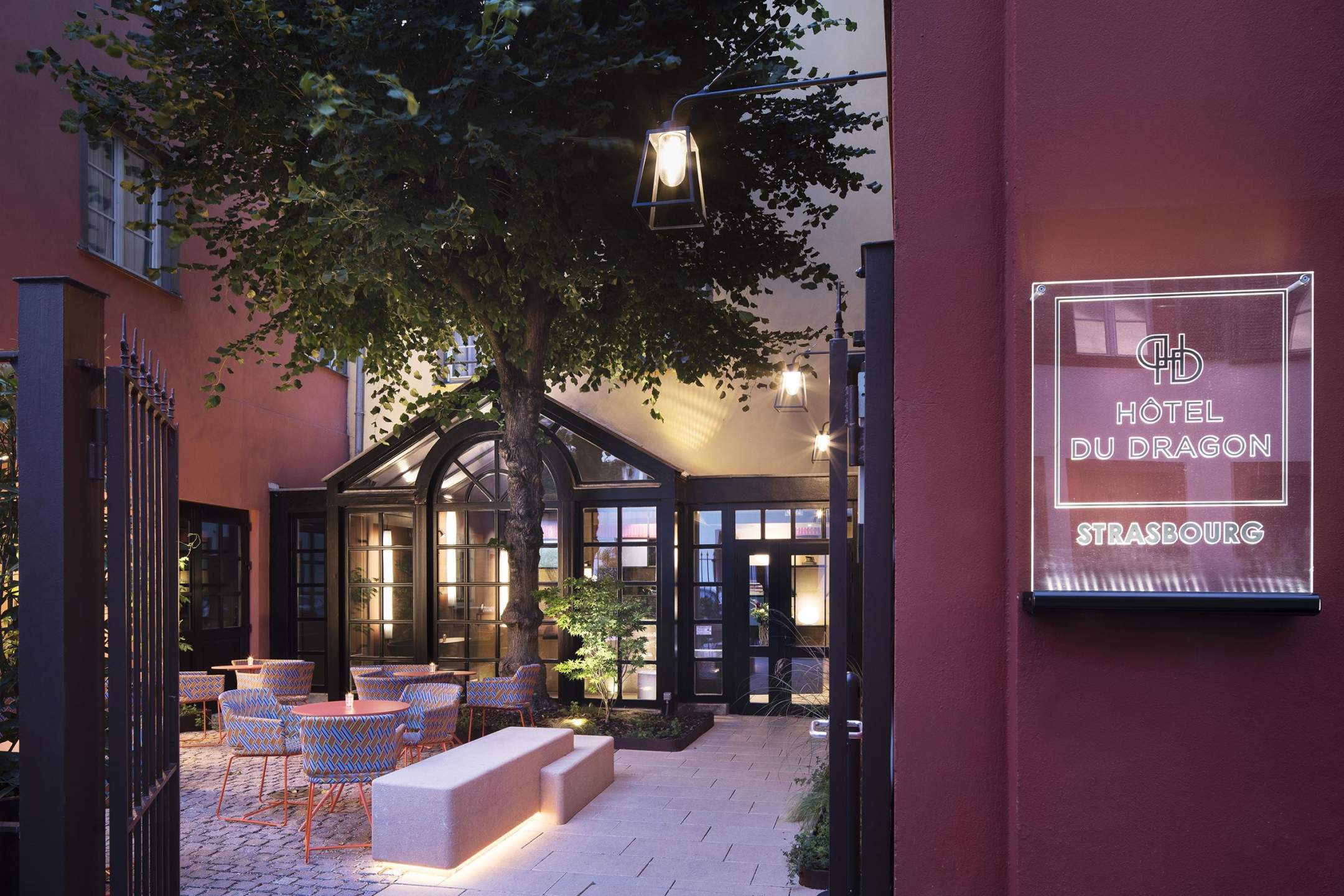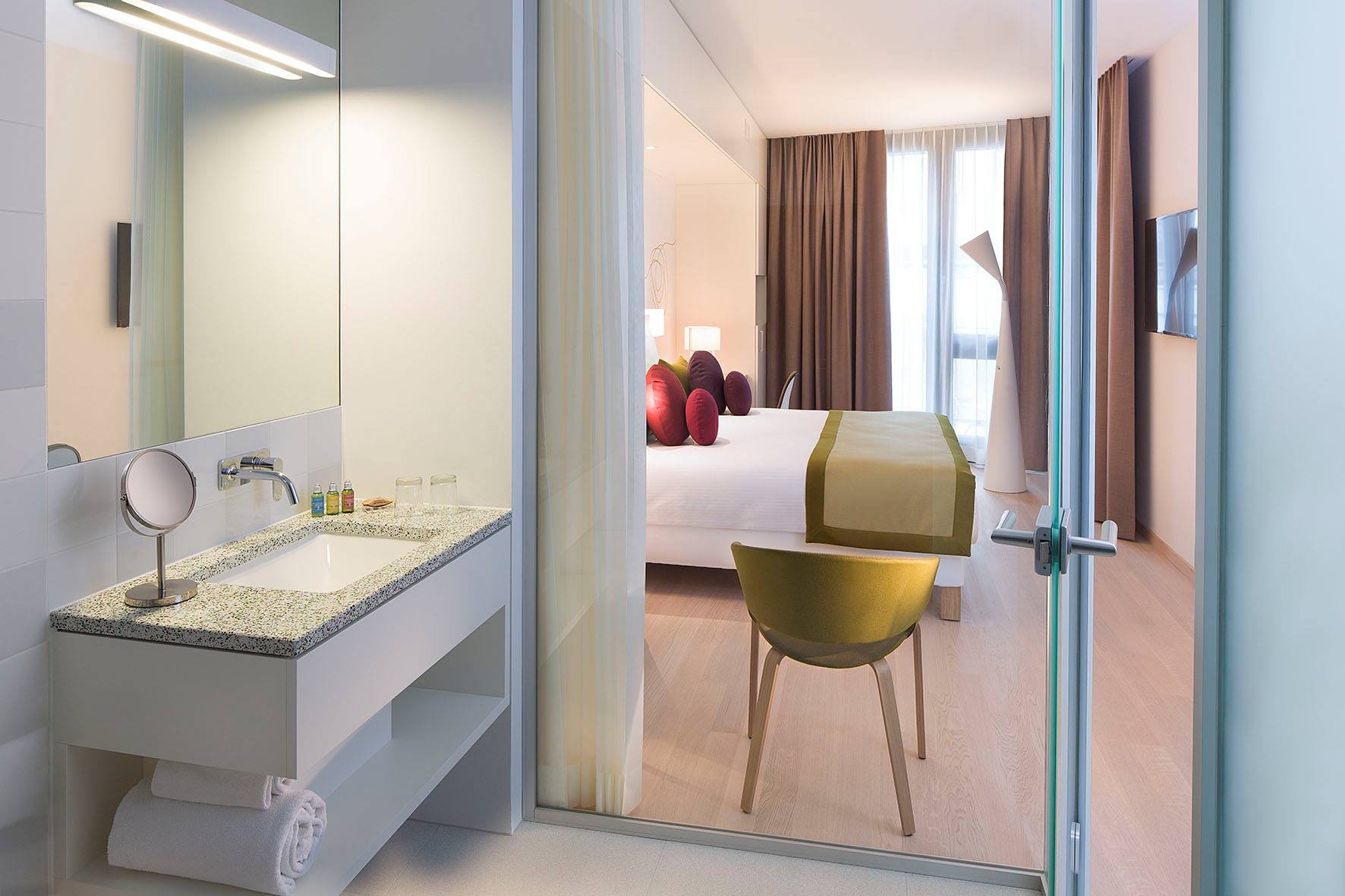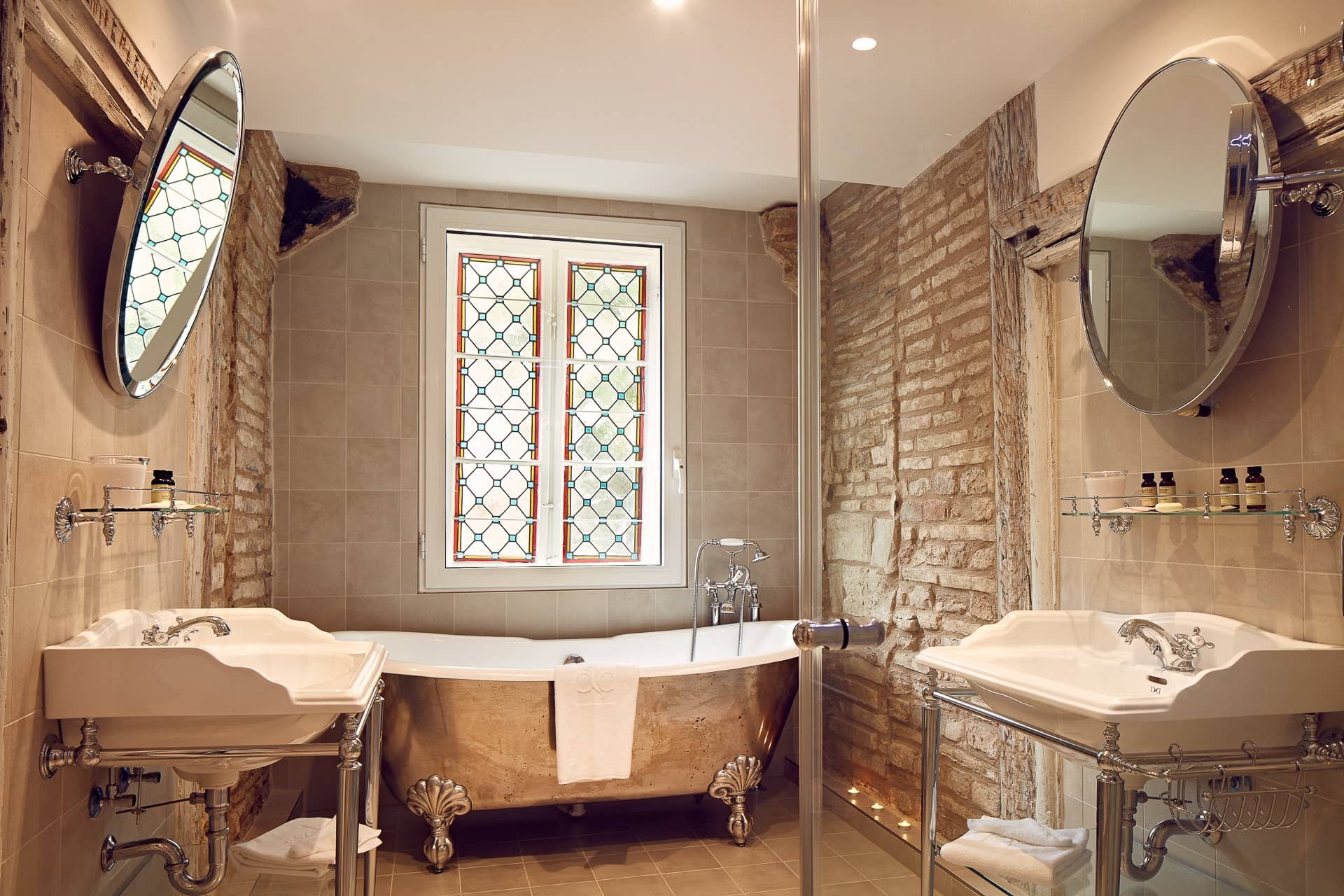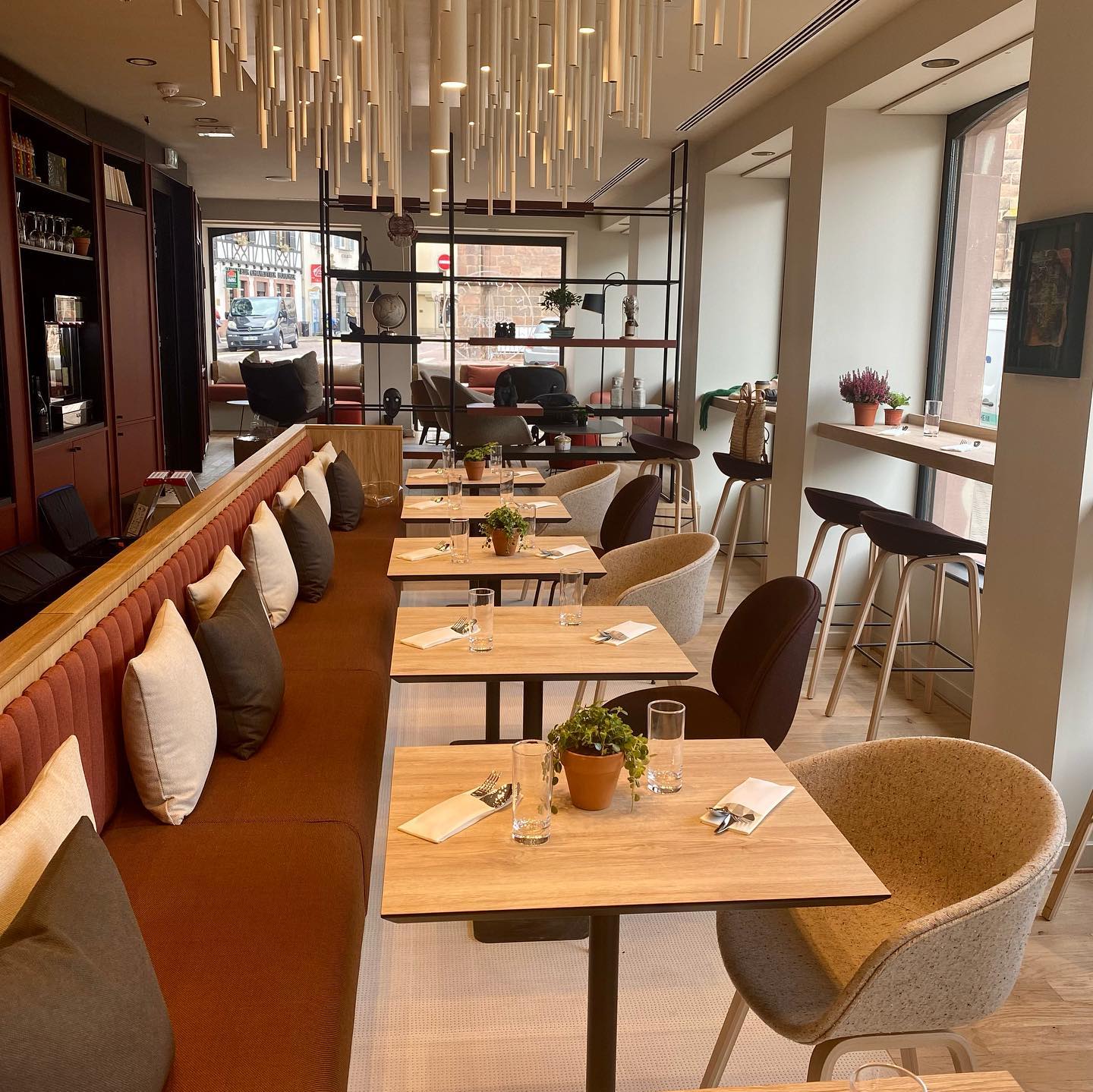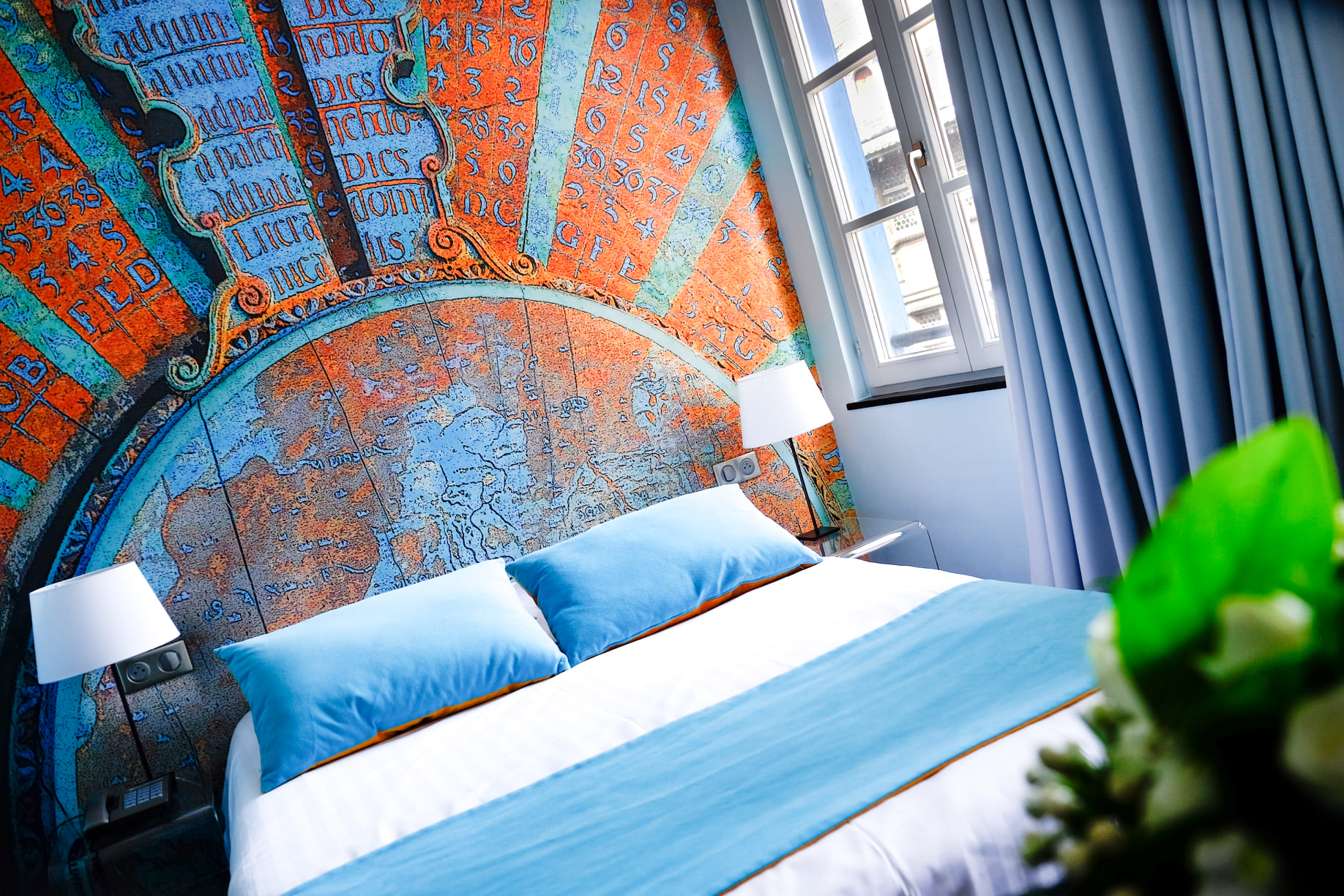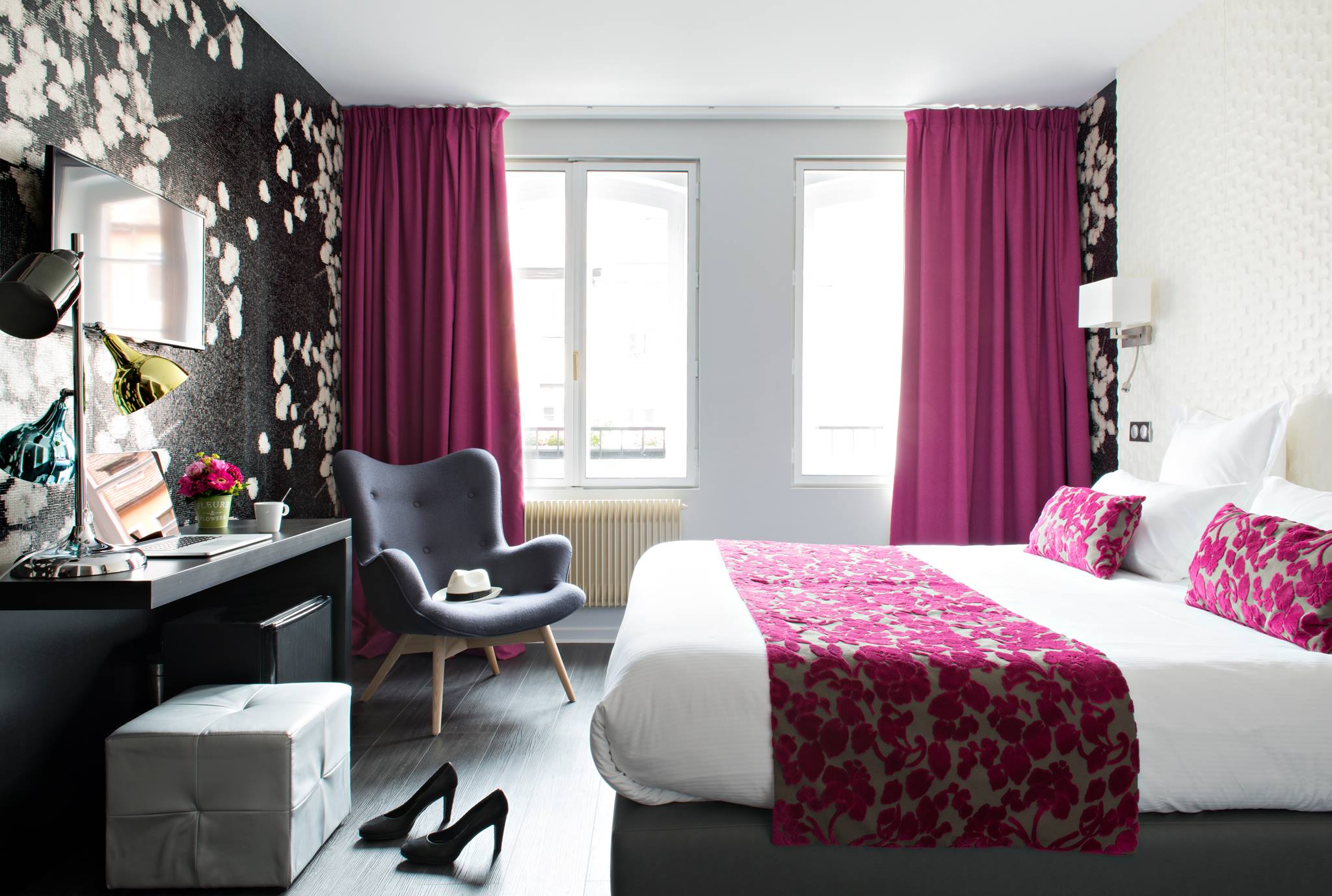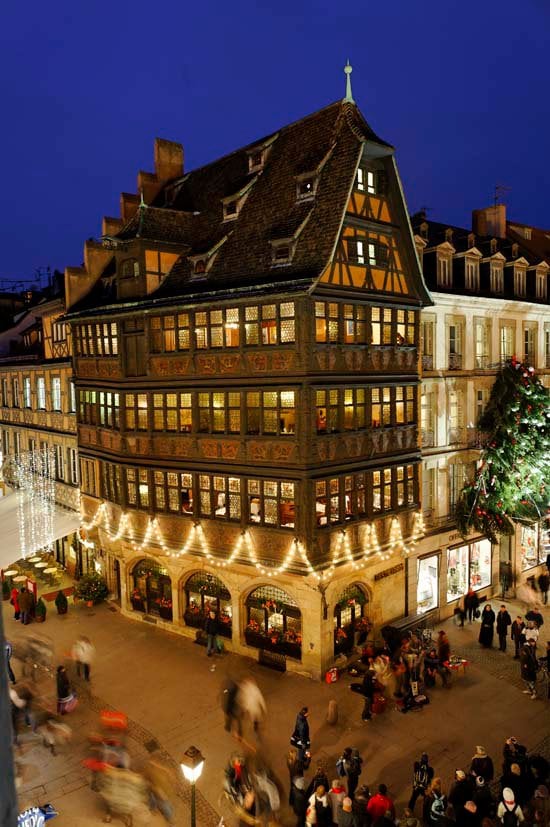Ideally located in Strasbourg city center, the 4-star Hotel du Dragon will be the ideal place for your stay in the Alsatian capital.
A few steps from Quai Saint-Nicolas and the Petite France district , our establishment will allow you to reach the unmissable sites and splendors of Strasbourg in a few minutes on foot. Our 4-star hotel in Strasbourg offers you top-of-the-range comfort, in the heart of a building full of character, in a refined and contemporary setting. Let yourself be seduced by the friendly atmosphere that emanates from the rooms, thanks to the combination of raw materials and modern colors. Each of them offers high quality equipment and the latest technology.
Archives: Directory listings
Directory listings
Diana Dauphine
In a traditional townhouse, this straightforward hotel is a 10-minute walk from Strasbourg Cathedral and a 12-minute walk from Palais Rohan. Trendy rooms are individually decorated, and come with free Wi-Fi, flat-screen TVs, desks and minibars. Upgraded quarters add iPod docks. There’s a business center, and a breakfast buffet and parking are available for a fee.
Cour du Corbeau
In the heart of the city, imagine yourself wandering around and getting lost in the corridors and passageways of a 16th century building. You may glimpse the courtyard through your window, or a statue that seems be smiling at the thought of passing time. Memories of days gone by in an inn dating from the days of Tsars and Princes…
A little history about the Cour du Corbeau…
In 1528 “La Cour du Corbeau” housed a hotel that went by the name of “Zum Rappen”. However, it seems that there was already an inn or post house here even before that. The Cour du Corbeau is a rare example of an architectural ensemble built as a hotel from the outset. After operating as an inn for over three centuries, it only closed its doors in 1854. Over this long period, the “Zum Rappen” inn welcomed a number of famous travellers including the Duke of Bavaria in 1570, the Swedish general Gustav Horn in 1632 and Marshal Turenne in 1647, to name but a few. Through the different eras, certain visitors even left writings behind them, such as in 1664 the Duke of Chevreuse, accompanied by Balthasar de Monconys, who was dazzled by the beauty of the engraved copper buckets used to draw water from the wells and public fountains. Others preferred to stay at the inn incognito, such as the German Emperor Joseph II or the King of Prussia, Frederick the Great.
In 1852, not long before the hostelry closed down, a part of the buildings was occupied by glass makers “Ott Frères”, who preserved the magic of this place for almost 130 years.
In 1871, a braid maker named Seitz set up business in the Courtyard. One of his customers was the Shah of Iran. Certain parts of the Cour du Corbeau served as lodgings for his workers.
In 1930, the Cour du Corbeau was listed as a historic monument. After the departure of the OTT glass makers in 1982, the Cour du Corbeau was left empty and derelict.
In 2006, a pool of developers (Scharf Immobilier, Foncière de la Montagne Verte, Histoire & Patrimoine) bought the architectural ensemble known as Cour du Corbeau .
In 2007, the Herculean task of renovating the site began. It was to last two years. The new owners and architects strove to bring its history back to life and preserve its original cachet. They worked like archaeologists, restoring carved wood façades and balusters, even uncovering even the historic inscription of the establishment’s name carved into the wood. On 1 May 2009, the new “La Cour du Corbeau” hotel opened its doors and brought the site back to life, in keeping with its neighbourhood which was already reinventing itself by reviving its past glories.
Hôtel Suisse
In the heart of the Grande-Ile de Strasbourg , a UNESCO World Heritage Site, at the foot of the majestic Notre-Dame de Strasbourg cathedral, adjoining the Château des Rohan (one of the richest museums in the province and a short walk from the banks of the Ill and the boat-mouches landing stage), the Hôtel Suisse can be found in a 17th century residence, full of charm.
During a stay, we leave time to time and we savor all the pleasures of a city that has preserved its soul and character.
The rooms, all singular and unique, some pretty and intimate, others larger and spacious, but all with soft and authentic atmospheres, have been furnished and decorated with care: fluffy duvets atmosphere associated with Alsatian Kelsch fabric in linen and cotton. Most of the rooms offer you a magnificent view of the cathedral.
On the ground floor, our Alsatian “Stub” , decorated with beams and half-timbering, gently wakes you up to enjoy a very gourmet breakfast buffet , featuring the famous Kougelhof d’Alsace.
And throughout the day, one-on-one or for a professional interview, meet at Café Suisse .
Always on the move, a unique and exquisite address.
Hôtel de l’Ill
Hôtel de l’Ill will charm you with its familial atmosphere and its 31 non-smoking rooms.
Entirely renovated in 2017, we are glad to propose you a hotel with a long-awaited elevator, facilitating the access to our four floors. We also offer six new superior rooms of 22 m² each, with a hosting capacity of three people, an additional floor with five beautiful standard bedrooms, among which two cute small rooms with a view on the cathedral. All bedrooms have an ensuite bathroom with a shower or a bathtub, toilets, hairdryer, television, Ethernet or Wifi.
The quality of the equipment and the location of the Hotel (5min from the Cathedral) will offer you an exceptional quality-price ratio.
The Hotel is located in a small (quiet?), one-way street and has a closed backyard with a large terrace.
The air conditioning is available in common areas and in the rooms.
Gutenberg
Facing the majestic Strasbourg Cathedral, immerse yourself in a trendy atmosphere by staying at the 4-star Hotel Gutenberg and discover all the charm of the European capital. The attentions of a large hotel are associated with the warmth and values of a family home. Discover the enchanting universe of the charming hotel in the heart of Strasbourg . The rooms are personalized, elegant and spacious, favorable to a change of scenery.
Hotel Cathédrale
It is with great joy that we are pleased to announce the reopening of our house on May 19, 2021. The sanitary conditions are finally met to find the desire to travel, to stroll in the streets, the terraces of the restaurants, find cinemas, opera and theaters, and rediscover our museums. We look forward to seeing you again, in an environment that is always secure, and scrupulously respecting health safety protocols. We will be at your side to make you love and revisit our peaceful city.
Hotel Rohan
Find a hotel in the centre of Strasbourg, in the pedestrianised zone, where the warm, welcoming atmosphere will give you an absolutely unique experience.
In the heart of the mediaeval district of the Alsace capital, in the pedestrian zone close to the Cathedral, the 4-star Hôtel Rohan welcomes you with everything ready to satisfy your needs.
Hotel Beaucour
Whether you are bringing a baby or a (very) large family, we have the right room for you.
Travel light with baby: we have everything you need! Baby bed, bottle warmer, baby sleeping bag, changing mat, high chair… and a large room with a whirlpool bathtub for bubbling.
Want to go out for a romantic dinner? A baby-sitting service can be booked 72 hours in advance.
Big child(ren) = big room: 10 rooms from 25 to 55m² (charm, suite or duplex suite) have a sofa to welcome your little ones. The suites and duplexes are equipped with 2 televisions, for the peace and quiet of young and old.
Children under 12 years of age are welcome free of charge in the same room as their parents and we are happy to offer them breakfast. Offer limited to 2 children.
Children over 12 years old: extra bed at 17€ + breakfast.
Maison Kammerzell
The Kammerzell House is one of the most famous buildings of Strasbourg and one of the most ornate and well preserved medieval civil housing buildings in late Gothic architecture in the areas formerly belonging to the Holy Roman Empire. Built in 1427 but twice transformed in 1467 and 1589, the building as it is now historically belongs to the German Renaissance but is stylistically still attached to the Rhineland black and white timber-framed style of civil (as opposed to administrative, clerical or noble) architecture. It is situated on the Place de la Cathédrale, north-west of the Strasbourg Cathedral, with whose rosy colour it contrasts in a picturesque way when seen from the opposite direction. The building’s inside has been decorated on all floors by lavish frescoes by Alsatian painter Léo Schnug (1878-1933). It now houses a restaurant.
